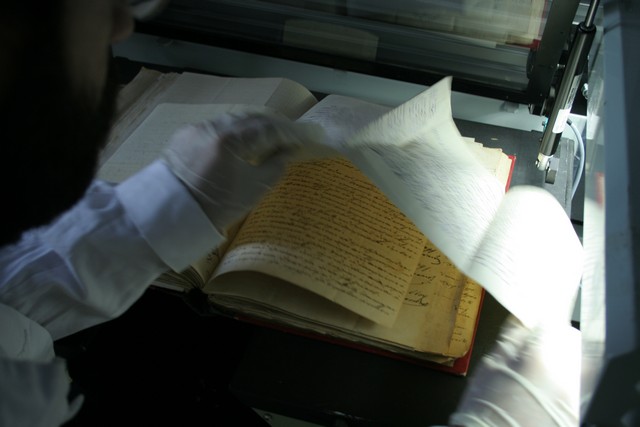I don't know why scholars of early Christianity are so reluctant to admit that their opinions might have been in error. Yes, I might shout at the top of my lungs 'I figured it out!' almost on a weekly basis. But the truth is I have in the same way that all those individual medical experiments might not be absolutely correct in their analyses any longer - but in some way, it helps move us towards the truth.
In any event, my recent (and fairly brief) study of the writings of Cyril of Jerusalem make feel quite confident that since:
- the content is clearly related to the Letter to Theodore and
- Cyril was a Patriarch of Jerusalem and Mar Saba is under the jurisdiction of the Jerusalem Patriarch then
- the likelihood is that someone in the Jerusalem Patriarchate copied out a ninth or tenth century miniscule in the late seventeenth through nineteenth centuries.
Now, it is entirely possible when the investigation will again change tomorrow when we discover something new again. However I think this is the scenario that everyone supposes makes the most sense. The difficulty of course is that Agamemnon Tselikas has made clear (at least from what I understand through my intermediary) that nothing like it exists anywhere in the Jerusalem Patriarchate.
Now I absolutely trust Agamemnon Tselikas. But science demands that we carry out every aspect of our study regardless what previous examiners have come up with. We have to attempt to get copies of the known or most likely suspects in Jerusalem starting with the guy at the very top of the pyramid - the Patriarch. of Jerusalem. Here is the list of all individuals who sat in the episcopal throne of Jerusalem since 1646 - the publishing date for the edition of Voss's collection of the letters of Ignatius (i.e. the book the handwriting was found) - and 1958, the year of discovery:
|
|
I am not saying for a moment that the author has to be a Patriarch only that this is clearly the guy that we know the most about in the Episcopacy.
I discovered a sample handwriting of Νεκτάριος (78) at the British Library's amazing site - we can cross him off the list (was too early anyway).
I have also managed to track down a handwriting for Δοσίθεος (79) and am certain he isn't our man:.\
Below is what claims to be an exemplar of his successor and cousin Χρύσανθος (80), that doesn't look right either. My guess is that we should go through all the people on top and work our way down until we find him.



